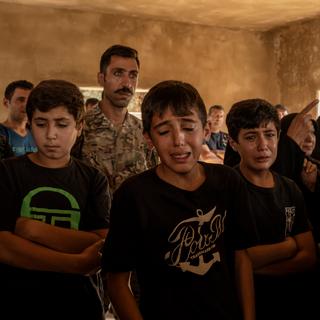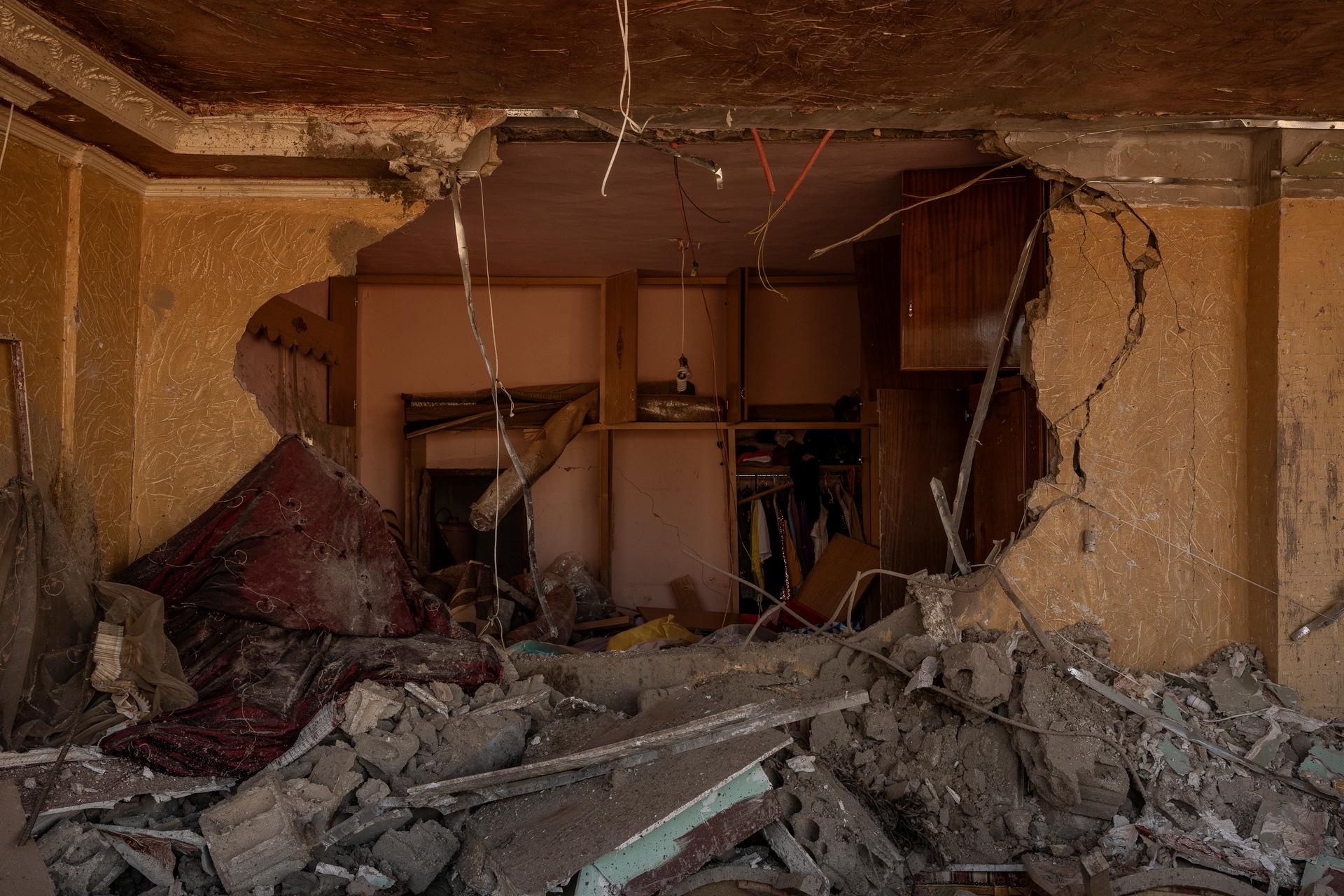


In Lebanon's Beqaa Valley, Hezbollah's historic stronghold: 'There's nothing but distress'
FeatureFor over three weeks, the region has been echoing with the sound of Israel's intensive bombing campaign. The remaining inhabitants, most of them farmers, tally the hundreds of people who have been killed or wounded.
"Ghara!" ("Air raid!"). The warning was shouted in the second-floor hallways of Rayaq Hospital. The explosion, followed by a mushroom of grey smoke visible from the window of an office in the emergency medicine department, instantly put the medical staff on alert on the morning of Thursday, October 10. The day promised to be grueling.
While most of the attention since the start of the conflict has focused on the villages in the country's south, where the first ground battles along the Israeli-Lebanese border took place, the intensive daily bombardment of the Beqaa Valley tells the story of another war, an air campaign waged by Israel in the country's east. Eastern Beqaa begins at Rayaq, near the ancient city of Baalbek, famous for its Greco-Roman temples, ruins and propylaea. The valley, bordered to the west by Mount Lebanon and to the east by Anti-Lebanon, is a historic stronghold of Hezbollah and a strategic corridor connecting it to its allies in Syria, Iraq and Iran.
There were few signs of life on the expressway crossing the valley, which was only used by a handful of vehicles moving at full speed. Curtains were drawn, stores were all closed and soldiers had abandoned the Lebanese army's checkpoints. In the villages deserted by their inhabitants, the only gazes one met were those of the "martyr" fighters killed by Israel, whose portraits were displayed at every entrance and exit, while yellow Hezbollah flags fluttered in the wind along the streets. Le Monde was only able to cross some of these towns accompanied by members of the group, as the Shiite movement restricts movement in part of the territory under its de facto control.

Traces of the bombings were visible everywhere. In every village, scattered cinderblocks and collapsed concrete slabs piled up where houses and stores once stood. Fields, olive groves and vineyards were scarred by craters, and power poles lay across the road.
'Savage strikes'
On Wednesday, October 9, Al-Khodor, a large farming town, was frozen in grief. The day before, five of its inhabitants perished in a bombardment. A small, tense crowd took out a body from an ambulance of the Islamic Health Organization, Hezbollah's first-aid service, to cries of "Allah is great." The prayer held on the first floor of an unfinished building in the presence of around 200 men, women and children was brief. "It's best to avoid gathering for too long in the same place anyway," said Suhail, a neighboring farmer, as an Israeli drone circled overhead. "This is the 17th missile to hit our village; 20 have died since September 23. Savage strikes, never a warning. There are only farmers in Al-Khodor. We grow potatoes. For weeks now, there's nothing but distress here," said Suhail, pointing to weeping women as a small crowd of 200 made its way to the nearby cemetery, where three of the previous day's victims were to be buried.
You have 66.64% of this article left to read. The rest is for subscribers only.
